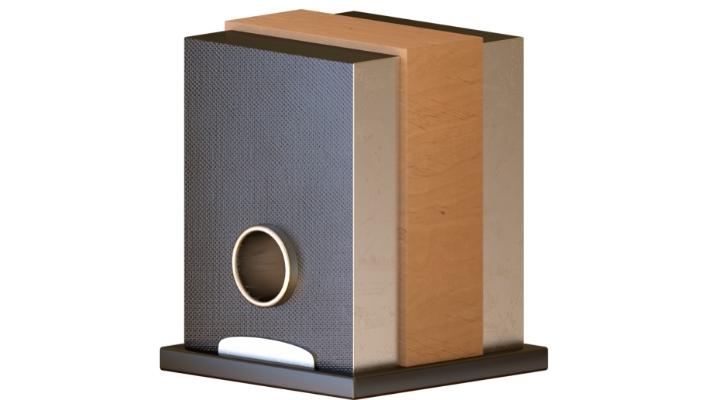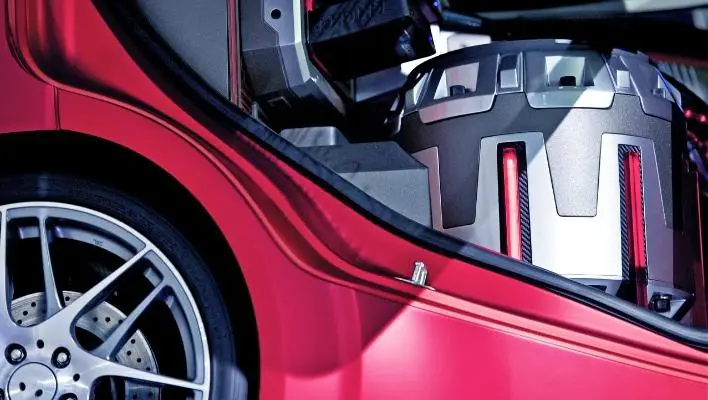Whether you’re looking to build a home theater system from scratch or just want to upgrade your car factory stereo, a subwoofer plays a significant role in the overall sound system. This critical component reproduces the lower frequencies that the typical loudspeakers struggle to reproduce on their own.
Such frequencies include musical instruments like the bass guitar, kick drums, and a couple of high-impact movie sound effects. In general, setting up a home theater or car audio without a subwoofer leaves a great deal to be desired.
When discussing subwoofers, the debate of bass tube vs subwoofer always comes up. Some audiophiles believe box subwoofers are the best while others would swear on a tube subwoofer. So, what’s the difference between the traditional box subwoofers and newly designed bass tubes?
We have made a detailed comparison of the two to help you get all the answers to your questions in one place. Let’s begin our discussion!

Overview of Bass Tubes
Now, before we get deep into the discussion of what bass tubes are, it is important to note subwoofers rely heavily on the enclosure they are placed in to function optimally. So if you want your subwoofer to deliver the best quality entertainment, you may want to confine it in an appropriate enclosure. So, what exactly is a bass tube, and how does it work?
Bass tubes, just as the name implies, are long cylindrical/tube-like enclosures that are used to house tube subwoofer units. Tube subwoofers are especially popular among car owners looking for something compact for their car stereo system.
The diameter of the tube is slightly bigger than that of the sub, but in most cases, the diameters are identical. Generally, the subwoofer driver faces either side of the tube. The rest of the space is used to control cone movement while allowing the sub to enhance the bass frequencies.
Like sealed subwoofer boxes, tube subwoofers are completely sealed, meaning they don’t allow the air to escape. The result of this is tight bass but the level of tightness may vary depending on the power rating of your specific tube subwoofer.
Advantages of bass tubes
- Compact design so they easily fit in any vehicle
- High-end bass tubes are designed to deliver heart-throbbing bass
- Most bass tubes are considerably affordable
- Inbuilt amplification, so you don’t need a separate amplifier
Disadvantages of bass tubes
- Compared to box subwoofers, the sound quality of the bass is somewhat lacking

Overview of Box Subwoofers
Subwoofer boxes are relatively large box-shaped enclosures that are used to accommodate different size subwoofers. Ideally, box subwoofers come in two major variations —i.e., ported subwoofer boxes and sealed enclosures.
Sealed subwoofer boxes are airtight enclosures that are used to house subwoofers. Their sealed design allows the bass frequencies to stay in place, making them ideal for applications that require accurate and tight bass reproduction
The construction of a sealed enclosure also makes it easy for echoes to compliment and sound signal coming from the driver, thereby adding to the bass. If you love to listen to music genres that require accurate bass reproduction, such as jazz or classical music, then a sealed subwoofer is your best option.
On the flip side, ported subwoofer boxes come with ports/vents at the front or back of the box to allow air to move in and out of the unit. These subwoofers use the port to enhance bass response while allowing them to put out a booming bass.
Perhaps the only disadvantage that ported subwoofer boxes have over their sealed counterparts is that they are less accurate. However, ported boxes always bring more ‘thunder’ than you would experience from a sealed one.
The good thing about a ported enclosure is that it is more efficient. Furthermore, the sub requires less power to reproduce bass compared to a similar sealed subwoofer with an equal power rating. This is because the air pressure inside the box generates a whistle effect, which makes your bass to be louder and boomy.
Advantages of box subwoofers
- Box subwoofers don’t muffle, thus allowing you to experience every note
- They protect your subwoofer unit from mechanical damage
- Improved sound clarity
- The design of box subwoofers gives an assurance of bigger bass sound and decent sound quality
Disadvantages of box subwoofers
- Relatively expensive
- Most require a separate amplifier
- They also tend to draw more power to keep up with their sound quality
- Bulky in nature

Bass Tube or Subwoofer: Which is Better?
From the above discussion, it is easy to see that there is no clear-cut answer to this question. Both bass tube and subwoofer boxes deliver decent sound quality, so at the end of the day, it all comes down to your personal preferences.
However, if you’re after better sound quality, then the box subwoofer is your right choice. Subwoofer boxes tend to be more accurate, plus they substantially add to the overall performance of your car audio. However, with a box subwoofer, you may want to compromise on your trunk space. Subwoofer boxes are generally bulky, so you may want to ensure that you have enough space in your cargo area.
When it comes to bass tubes, the sound quality tends to suffer, and the bass accuracy is also low. However, if you’re looking for something compact that you can toss under the driver seat, then a subwoofer tube is the way to go.
In terms of budget, bass tubes are by far more affordable, so if you are working with a strict budget, then you’re better off with a bass tube. On the other hand, if you are looking for something that is not only powerful but also sounds great, it might pay off to spend more and invest in a subwoofer box.
Frequently Asked Questions
Q: Can I use a bass tube in home audio?
Although bass tubes are popular for car stereo applications, you can use a bass tube with your home theater system. Most car subwoofers support home audio applications provided that they are supplied with the right amount of power.
Q: Do bass tubes need an external amplifier?
Most bass tubes are active, meaning they come with an amplifier inbuilt already. Such units have a limited power output, but they are more than enough for less power-hungry speakers where their limited power is not much of a problem. However, if you’re looking to enjoy some decent performance from your bass tube, it is always a good idea to go with an external amplifier.
The Bottom Line
Subwoofer enclosures play a critical role in the overall performance of your sound system while ensuring that your subwoofer is protected from damage. When choosing between a subwoofer box vs bass tube, you may want to consider several factors, including the space available, the expected level of loudness as well as your budget.
While bass tubes do offer a decent bass output, their performance hardly compares to that of a dedicated box subwoofer. Accurate low-end reproduction is crucial in the overall music experience, but you can only enjoy it by investing in a decent bass unit.
